The summer has many perks, but sunburn isn’t one of them. When you spend a lot of time exposed to UV rays (particularly UVB rays) you can get a burn even with SPF protection. Depending on the severity of the burn, you may experience:
- Redness
- Inflammation and swelling
- Itching
- Pain and discomfort
- Dryness and tightening of the skin
- Skin peeling
- Blisters
Long-term damage from sunburns may include brown spots and hyperpigmentation, premature aging signs, and even skin cancer.
Here, we explore the best treatments for temporary relief from sunburn and provide tips on preventing sunburns from happening in the first place.
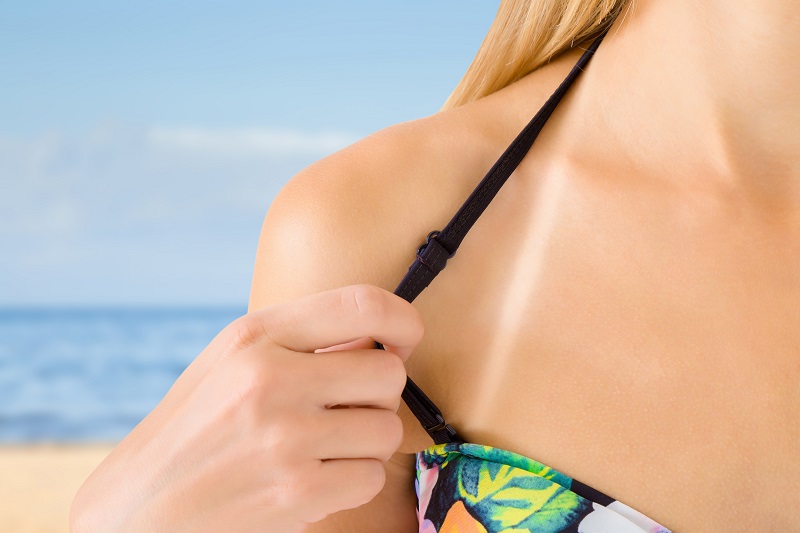
Best Sunburn Treatment Tips
Sunburn can happen even to those who most diligently protect themselves from the sun. All it takes is missing a reapplication of sunscreen or having fun in the water for too long.
Fortunately, there are many ways to speed up the healing process after a sunburn and get relief from the pain. You can even whip up some of these remedies at home.
1.Drink Plenty of Water
When UV rays break the skin barrier and cause sunburn, they also drain the body of fluids. To avoid dehydration, drink plenty of water throughout the day. Hydrating from the inside out will speed up the process of sunburn recovery.
2.Moisturize
It’s also important to hydrate from the outside in. Use moisturizing serums and creams with humectants that help attract and retain moisture from the air. Apply them generously after taking a cold bath. Ensure the product doesn’t contain any rich oils or petroleum, as they can lock in heat.
3.Soothe the Skin with Aloe Vera
Aloe vera is one of the best humectant ingredients. Look for moisturizers that contain a high percentage of aloe vera gel. You may also use the plant in its natural form. Just squeeze out the juice from the leaves and apply it to inflamed skin. Alternately, peel the leaves, open them, and place the juicy part on the burn.
4.Use Cold Compresses and Cold Baths
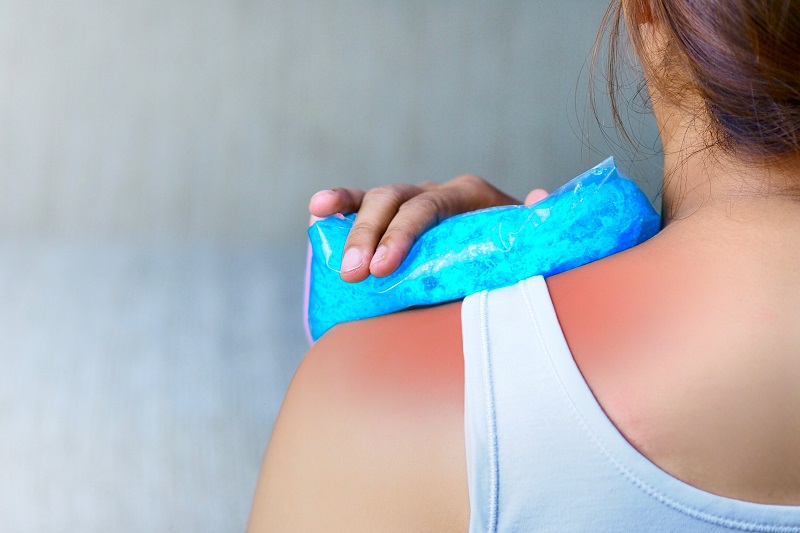
In times of a sunburn crisis, cold baths, ice packs, and even frozen veggie bags are your friends. Apply ice or frozen veggies wrapped in a cloth to the raw, painful skin every 15-30 minutes.
Cold showers and cold baths have a similar, soothing effect on a sunburn. Don’t use soap because it may irritate the sensitive skin and dry it out even more. Use essential oils instead or put several tablespoons of oatmeal in your cold bath. Oatmeal helps reduce skin inflammation and itching, according to dermatologists.
Note: For more tips on how to reduce inflammation, check out our guide to anti-inflammatory skin care.
5.Apply Yogurt to Inflamed Skin
Yogurt is another proven sunburn reliever. The good thing about yogurt is that you can apply it as much and as often as you want. You’ll be amazed at how quickly your burning skin soaks the yogurt up. And you’ll feel instant relief.
6.Eat Watery Fruits and Vegetables
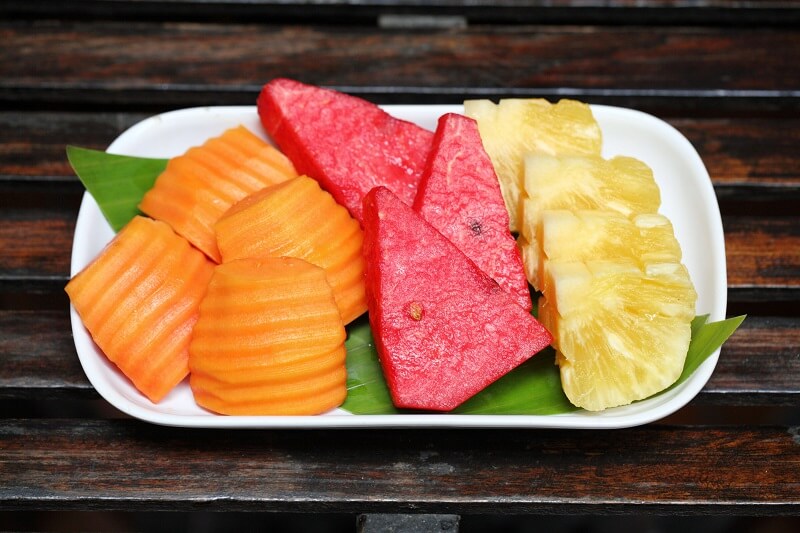
In addition to drinking lots of water, eat lots of fruits and vegetables with high water content like melons, cucumbers, pineapples, grapes, strawberries, oranges, celery, etc.
7.Take OTC Pain Relievers
If your sunburn is very painful, inflamed, or swollen, take a pain-relieving drug such as aspirin or ibuprofen according to drug instructions. Medication won’t speed up the healing process, but it will provide relief from the pain.
8.Don’t Pop the Blisters and Peel the Skin
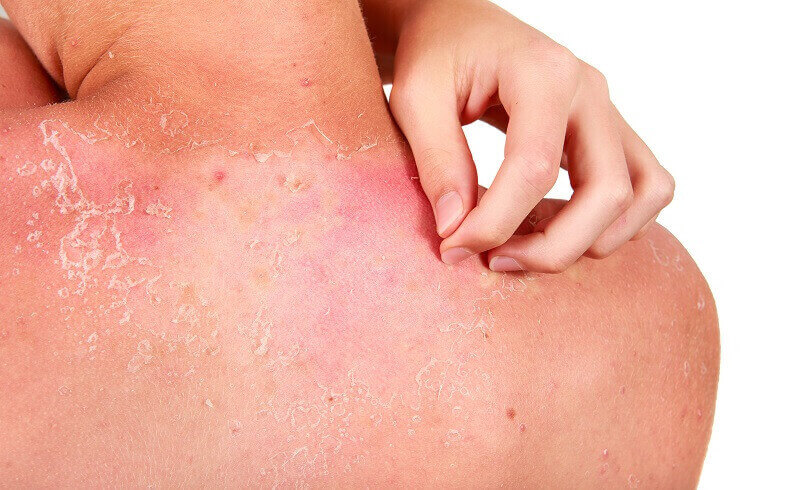
If your skin peels after a sunburn, or if you experience blisters, don’t pick at them. Popping the blisters, peeling the skin, and exposing new, raw skin increases the chance of infection.
Instead of peeling the skin, generously apply a soothing moisturizer to the area. Let the blisters heal on their own.
9.Stay Away from the Sun
Exposing your skin to the sun after a sunburn will only worsen the condition and may cause extreme pain. If you must leave the house, wear loose, tightly woven clothing, a hat, sunglasses, and a thick layer of sunscreen.
10.Avoid Tight Clothing
Wearing tight-fitting clothes may cause discomfort and pain to your sensitive, swollen skin. Synthetic fabrics can irritate the wound, and tight clothes may cause more peeling. Instead, wear loose cotton or linen clothes.
How to Prevent a Sunburn
Prevention is always better than treatment—especially when it comes to sunburns. You may heal inflamed skin and recover from pain, but you can’t reverse the increased risk of skin cancer.
Here are the safest ways to prevent sunburn.
Use Sunscreen Properly
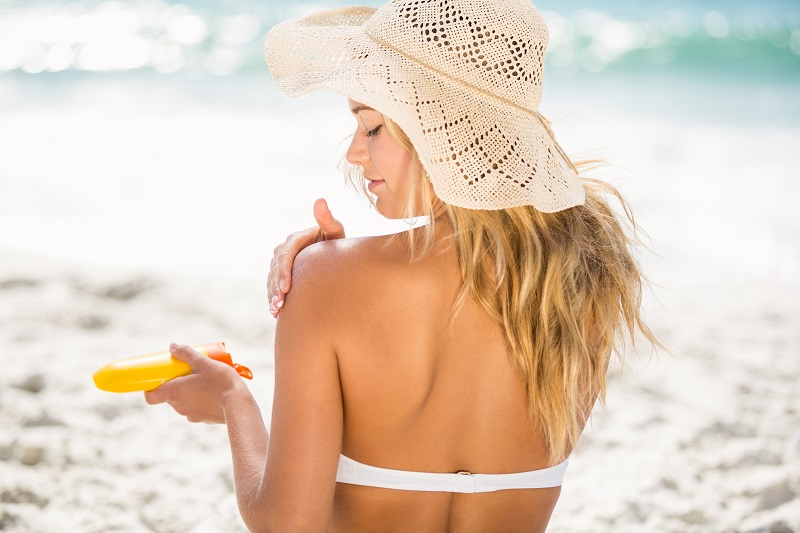
Follow these three tips for proper sunscreen use:
- Choose a sunscreen that protects against UVA and UVB rays and has an SPF of at least 30. Products with zinc oxide or titanium oxide typically provide the necessary sun protection.
- Reapply sunscreen every two hours. When the sun is particularly strong, reapply every hour.
- Apply a thick layer of sunscreen on both the face and the body.
Avoid the Sun During Peak Hours
The sun’s UV rays are the strongest between 10 AM and 4 PM. If you can, stay out of the sun during that period. Staying indoors is the safest solution, but if you need to go outside, seek shade and wear protective clothing (in addition to generous layers of sunscreen).
Wear Hats, Sunglasses, and Protective Clothing

Choose a hat with a wide brim to cover your entire head. Wear sunglasses to protect your eyes and the skin around the eyes. That’s where premature aging signs first appear. Protect your body with loose, tightly woven clothes. Beware that dark clothes attract more heat.
Be Careful if You Use Sun-Sensitizing Drugs
If you take medication like antibiotics, drugs for diabetes, diuretics, tranquilizers, and oral contraceptives, you may experience increased sensitivity to the sun. Follow all the tips above and contact your doctor if you need alternative medication during a vacation.
When Should You Visit Your Doctor?
Seek medical help if you get sunburned and experience the following symptoms:
- Blisters spread over a large part of your body
- Severe swelling and inflammation
- Pus or blood from an open blister
- Dehydration
- Very high fever
- Fainting or nausea
Conclusion
The summer provides many ways to have fun. To enjoy them fully, protect your skin from one of its greatest enemies—the sun. Use the few, simple tips above to avoid short-term pain and long-term skin damage.


